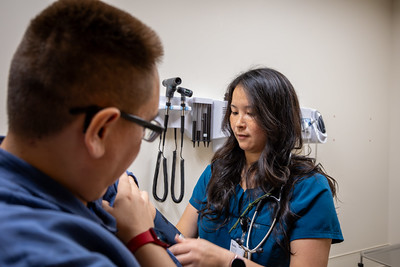SGLT2 INHIBITORS
Living with diabetes can be stressful, to say the least. There is so much to manage and remember every single day! Understanding diabetes medication can be a significant source of stress. Hopefully the information here will take some confusion out of the picture. We’re going to focus on a commonly prescribed class of medication for diabetes called “SGLT2 Inhibitors” SGLT2 stands for “sodium-glucose transport protein 2.” It’s a fancy name, but the way the medicine works is fairly simple…we’ll get to that in a moment. Note: “Blood sugar” and “blood glucose” mean the same thing, but I use glucose here.
OVERVIEW
SGLT2 Inhibitors (SGLT2s) are used to treat Type 2 diabetes. They are oral medications that come in tablet form. These medications end in “flozin”; the three most common SGLT2s are Canagliflozin (Brenzavvy®), Dapagliflozin (Farxiga®) and Empagliflozin (Jardiance®). There are others on the market, but these are the most prescribed.
Not to state the obvious, but I’m going to because it is important: The goal in treating diabetes is lowering blood glucose. These medications work by causing the kidneys to remove excess sugar from the body through the urine. Basically, it causes a person to pee out more glucose rather than save it to the blood.
HOW THEY WORK
Let’s take a closer look at exactly what an SGLT2 does in the body…
The job of the kidneys is to filter out waste, including sodium, potassium and glucose, among other things. When glucose gets to the kidney from the blood, the kidney filters it out, then the body—which is amazingly smart—decides whether to send the glucose back into the blood stream to be used for energy, or to send it out of the body as waste in the urine.
How does the body make the decision? In a person without diabetes, it makes the decision based on how much glucose is in the blood already. If it is more than 180 mg/dl, the body knows that there is enough glucose in the blood to use for energy and will send the glucose out with the urine. If the blood glucose is less than 180, the body will reabsorb the glucose into the blood.
What happens then? An increase in blood glucose! Which is good if the body needs energy, but if it DOESN’T need glucose, how exactly does it get out through urine?
Here’s how…
The channel that moves the glucose from the kidney back to the bloodstream is called “sodium-glucose transport protein 2,” or SGLT2 (you can think of it as a type of highway). What’s important is that the name basically tells you what the medicine does: It INHIBITS, or blocks, that highway back to the blood. So where will the glucose go then? The only other option it has is out through the urine and…down the toilet.
SIDE EFFECTS
So SGLT2s can be a useful tool for controlling Type2 diabetes. There are some potential side effects, including:
- Weight loss, usually five to seven pounds
- Hyperkalemia (too much potassium in the blood)
- Dehydration (be sure to drink water!)
- Genitourinary infections, which can be bacterial or fungal (i.e., yeast). Urinating out more sugar increases the chance of infection in the urinary tract or genital area.
If you are on an SGLT2, please discuss these potential side effects with your provider!
SGLT2s not only are used in diabetes but also have been found to have protective effects for folks with heart disease and chronic kidney disease. In general, they are a simple and effective medication for folks living with Type2 diabetes.





